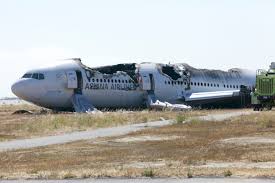Understanding the Current Trends in Flights

Introduction
Flights play a crucial role in global connectivity, carrying millions of passengers and freight across borders every day. As travel patterns evolve and the industry recovers from the COVID-19 pandemic, understanding the latest trends in flights is more important than ever. This article explores the current state of the aviation industry, including factors influencing air travel, passenger behaviour, and future predictions.
Current State of the Aviation Industry
As of 2023, the aviation industry has seen a remarkable rebound in the number of flights compared to the steep declines experienced during the pandemic. According to the International Air Transport Association (IATA), global air passenger traffic has reached nearly 80% of pre-pandemic levels. Major airlines are resuming services to popular international destinations, leading to an increase in demand for flights during the summer season. Countries around the world are lifting travel restrictions, further boosting passenger confidence.
Factors Influencing Air Travel
Several factors are currently shaping the flight landscape. Firstly, the rise of low-cost carriers has made air travel more accessible, especially for short-haul flights. Moreover, advancements in technology, such as mobile boarding passes and enhanced in-flight entertainment options, are enhancing the travel experience for passengers.
Another significant trend is the growing awareness of environmental issues related to air travel. Airlines are investing in more fuel-efficient aircraft and exploring sustainable aviation fuels to reduce their carbon footprint. According to a report by the Air Transport Action Group (ATAG), the aviation sector aims to achieve net-zero carbon emissions by 2050, prompting significant shifts in how flights are operated.
Passenger Behaviour and Experience
The behaviour of air travellers has also evolved. In 2023, more passengers are looking for flexibility in their bookings, seeking options that allow changes without heavy penalties. Moreover, the demand for extra comfort and services has risen, with more passengers willing to pay for premium experiences, such as additional legroom and upgraded meals.
Conclusion
The flight industry is in a state of dynamic change as it adapts to new realities post-pandemic. As airlines resume normal operations and passenger traffic increases, industry stakeholders must remain responsive to evolving consumer preferences and environmental challenges. Future forecasts indicate that the aviation industry will continue to grow, with a projected increase in flight capacities as technological advancements continue to make air travel safer, more efficient, and eco-friendly. For consumers, this means more options and greater accessibility, setting the stage for a new phase in global travel.









